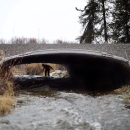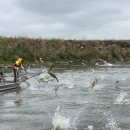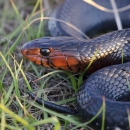The Fish and Aquatic Conservation program is proud to announce the completion of the 2023 annual report. The Fish and Aquatic Conservation program leads aquatic conservation efforts for the U.S. Fish and Wildlife Service. We are committed to tackling the nation’s highest priority aquatic conservation and recreational challenges to conserve, restore, and enhance fisheries for future generations.
Publication date
Type of document
Annual Report
Media Usage Rights/License
Public Domain
Program






